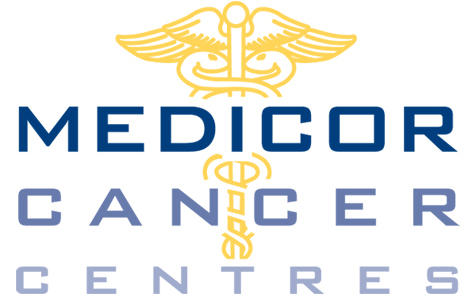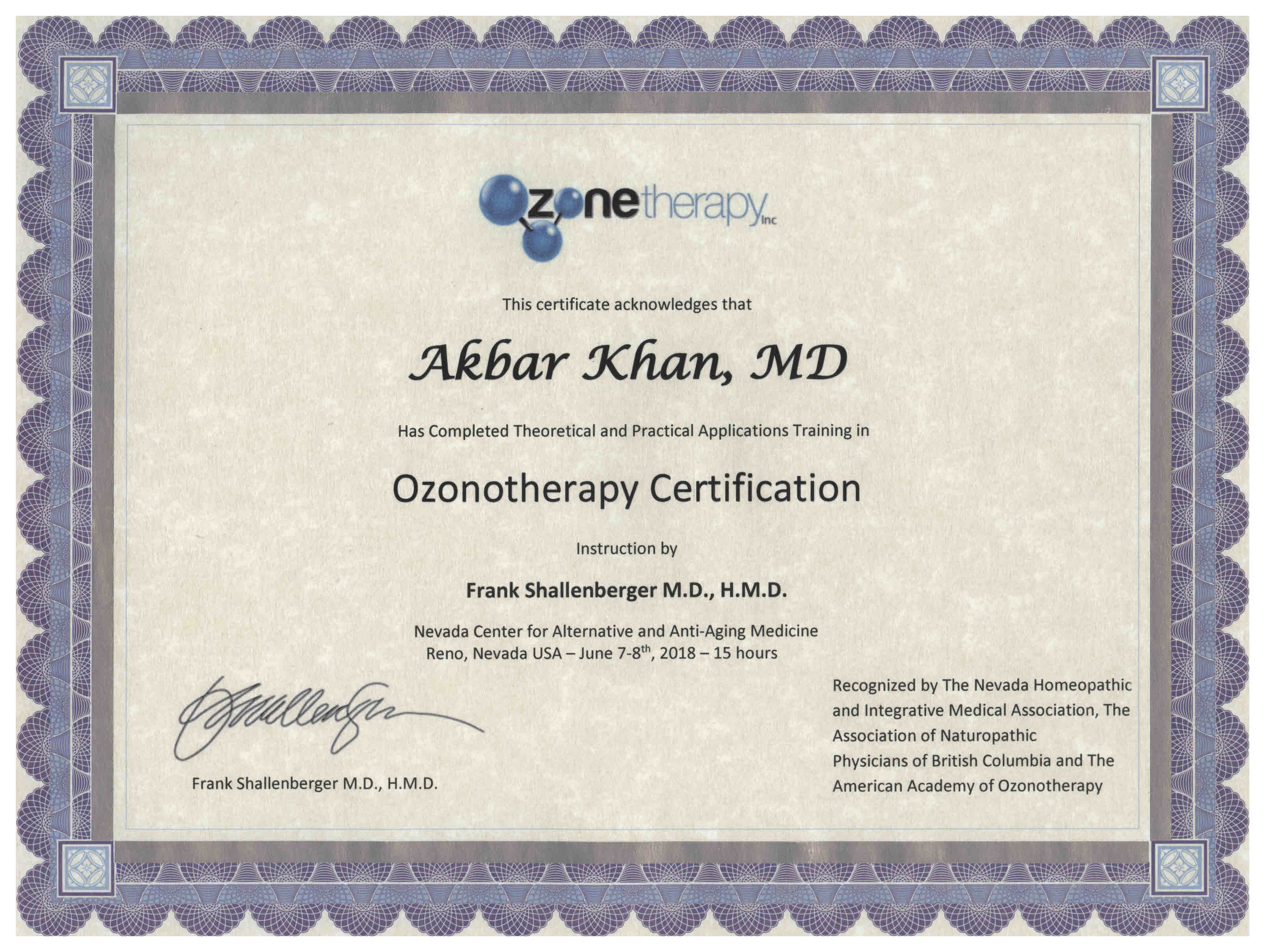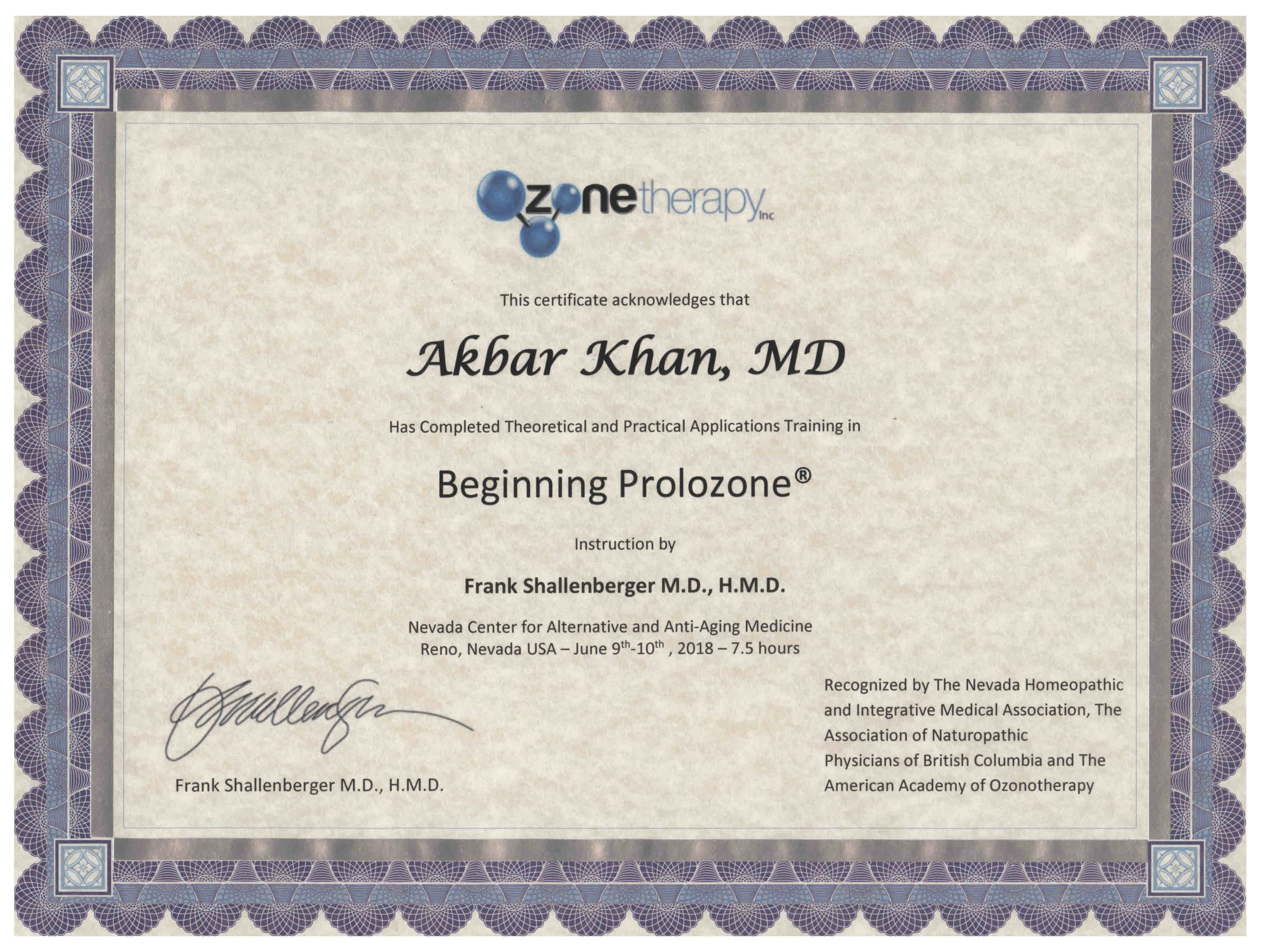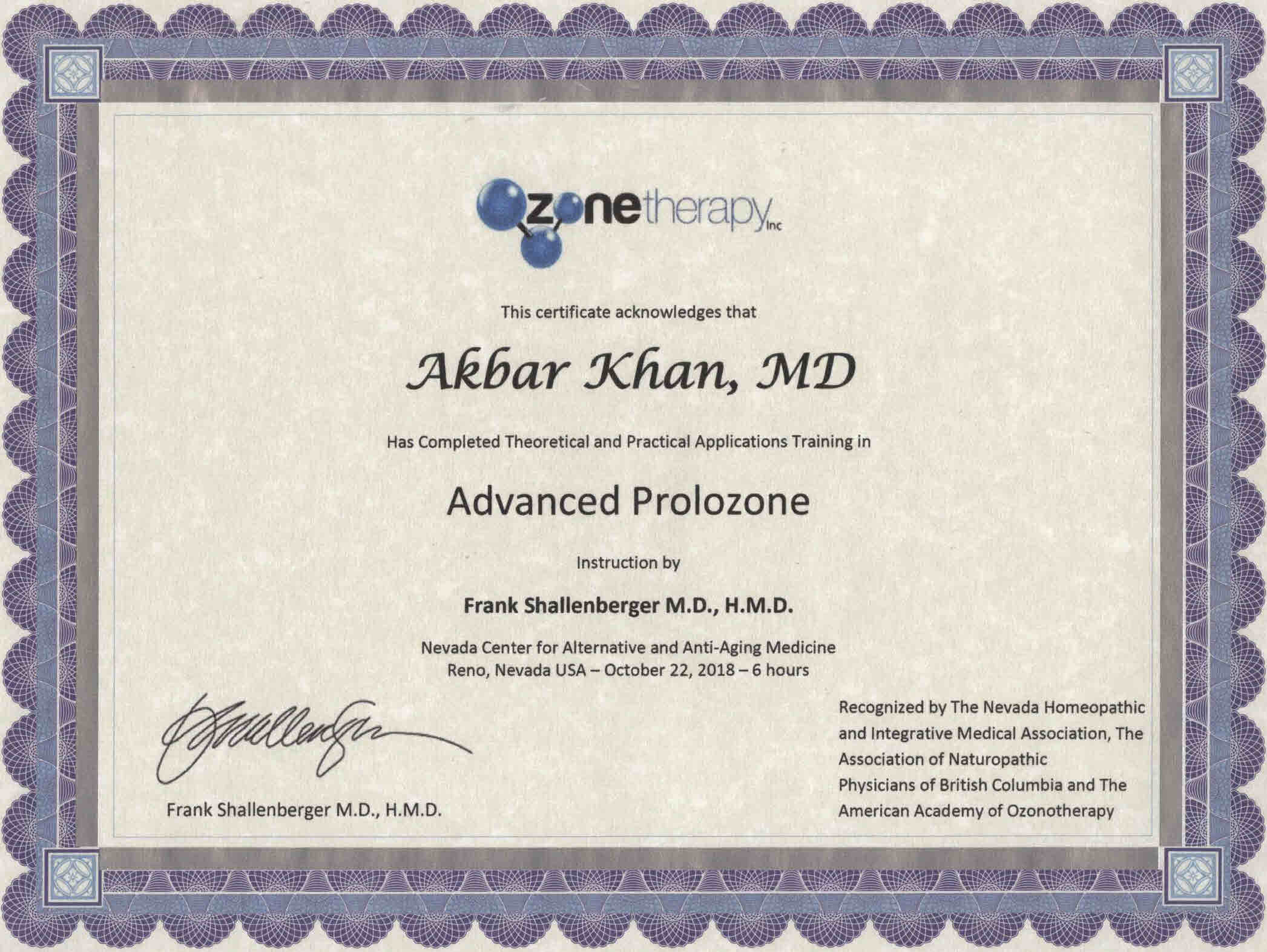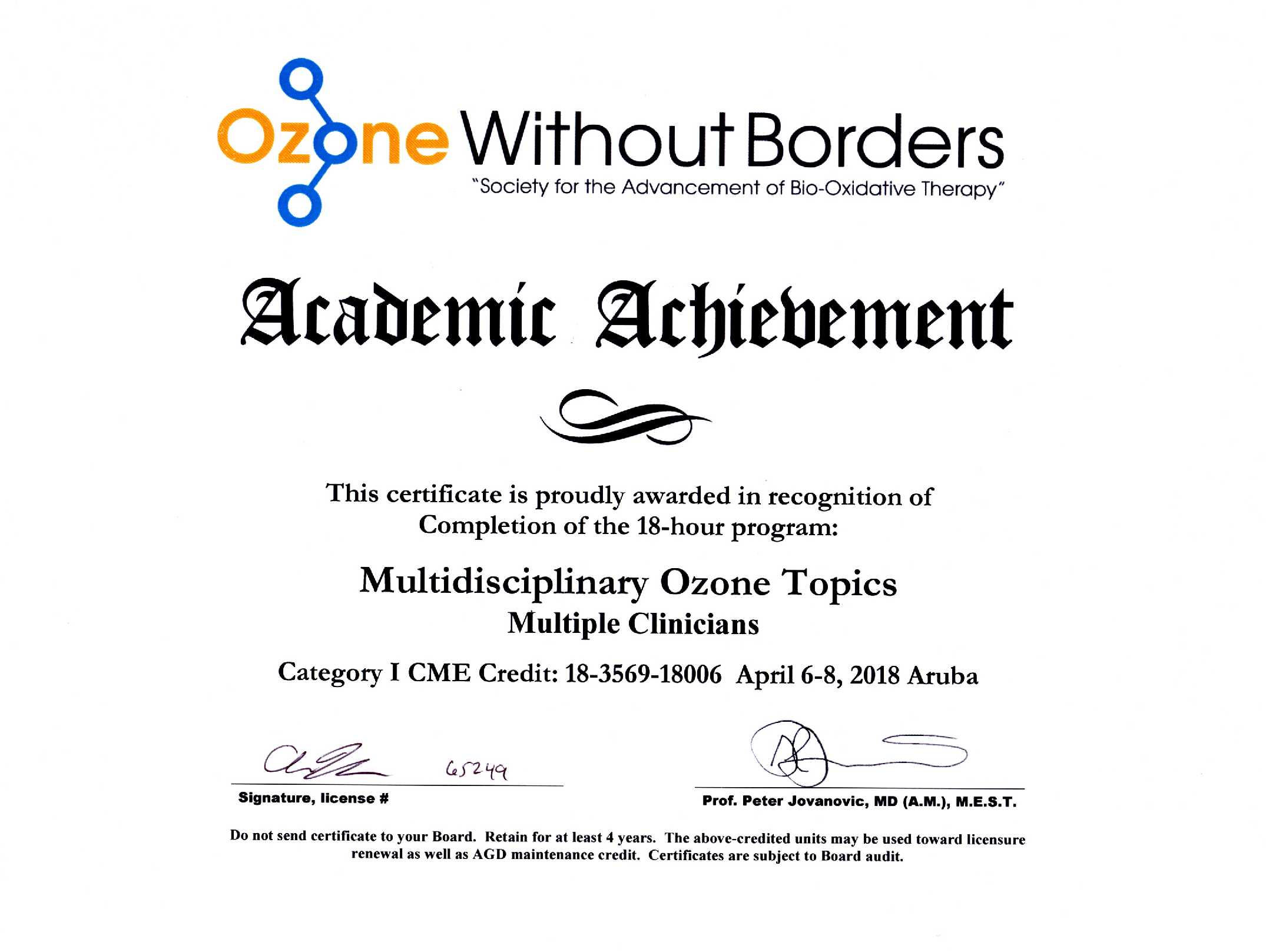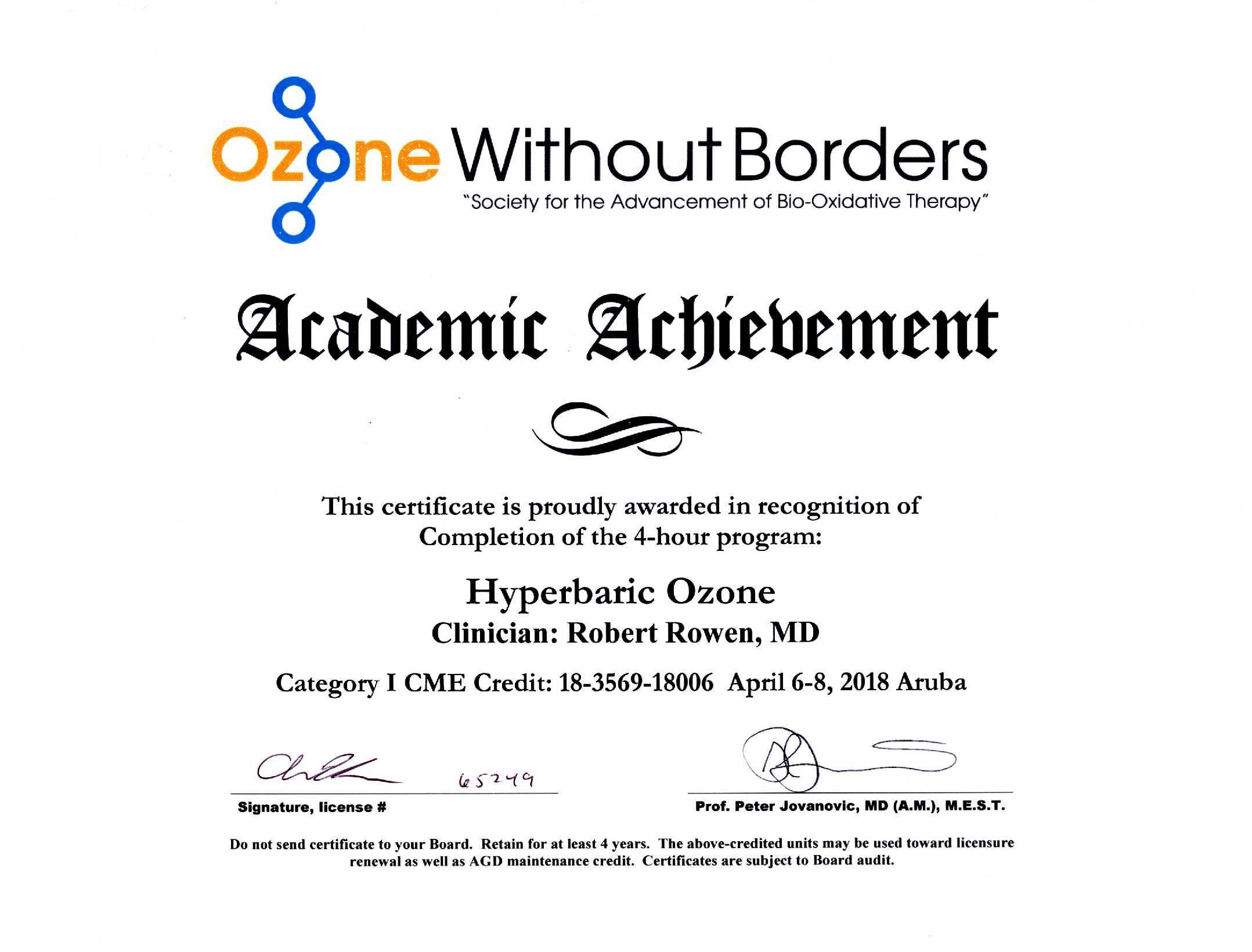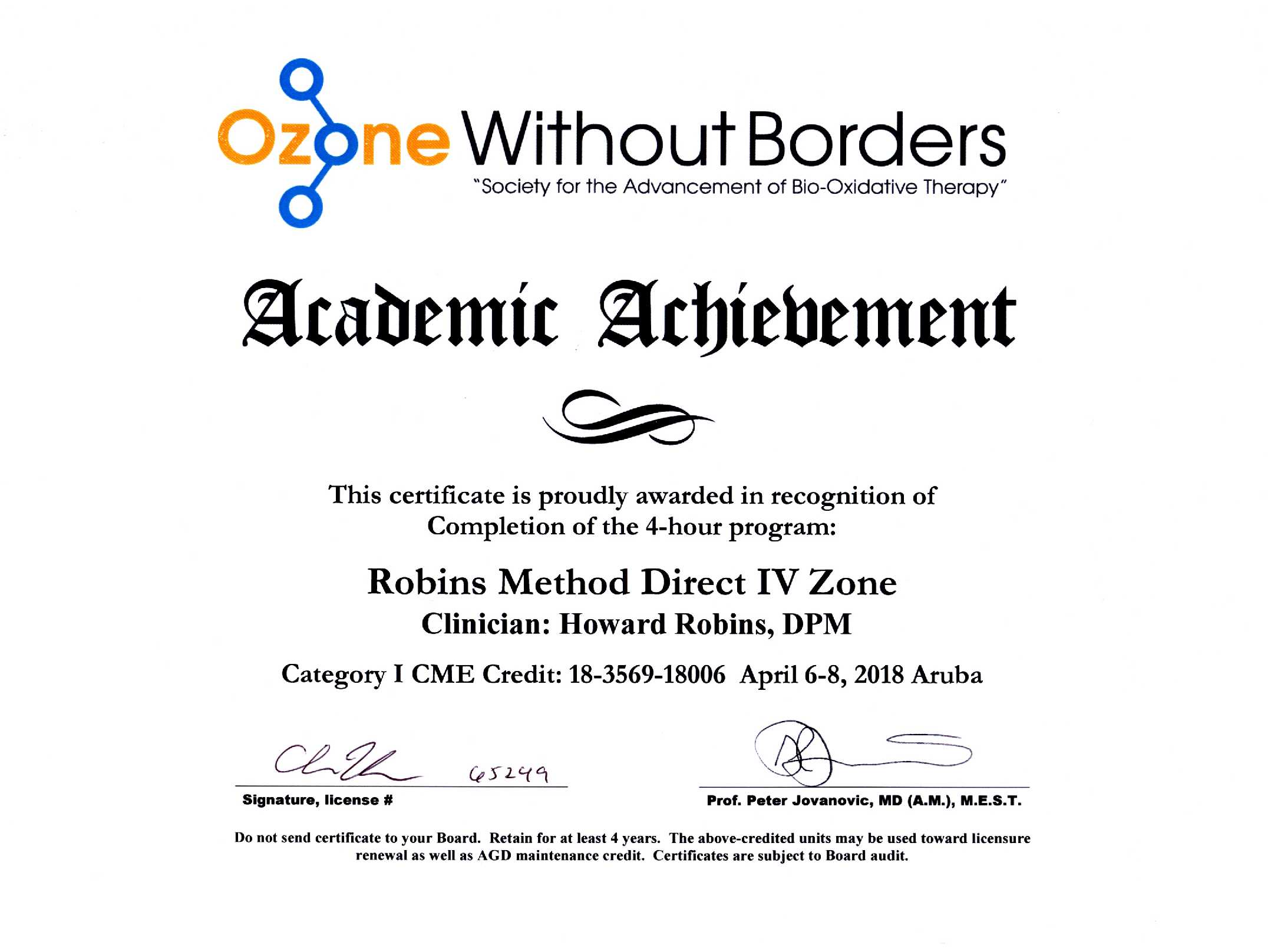Ozone Therapy
Updated Jul 1, 2022
OZONE THERAPY OVERVIEW
OZONE IS A NATURALLY-OCCURRING GAS
Everyone is familiar with oxygen gas, and how vital it is for sustaining life. The air we breathe provides oxygen which is transferred into the blood within our lungs, where it is carried to all parts of the body and used by our cells for their metabolism (chemical reactions). Air is about 78% nitrogen gas and about 21% oxygen gas. Oxygen molecules in the air are composed of 2 atoms of oxygen (O2). When ultraviolet light or electric sparks are applied to O2, it causes the oxygen molecules to break up into single oxygen atoms, which spontaneously and rapidly combine back into O2. However, some atoms combine into O3 which is called ozone gas. Ozone gas is formed in the upper atmosphere of the earth due to ultraviolet light exposure from the sun. This ozone layer helps protect the earth from excessive UV light which can be harmful to animals and plants.
OZONE CANNOT BE EASILY STORED
Ozone is an unstable gas with a half-life of about 40 minutes at room temperature. This means that after ozone gas is produced, only half remains after 40 minutes. After another 40 minutes, ¼ remains, and after another 40 minutes, 1/8 remains, and so on. Because of this, when ozone is needed for medical therapy, it must be created and used right away. It cannot be easily stored (at cold temperatures, it is possible to store it however). Ozone gas also has a distinct odour. In low concentrations, it can be described as a “fresh” smell, and in higher concentrations, it resembles a chlorine bleach odour.
OZONE HAS BEEN EXTENSIVELY RESEARCHED
Ozone has been researched and used as a medical therapy around the world for decades, especially in Russia and Europe. Hundreds of peer-reviewed scientific publications demonstrate the effectiveness of ozone in treating many different diseases including cancer, autoimmune disease, inflammatory conditions, cardiovascular disease, endocrine disease, chronic pain and acute or chronic infections. There is even evidence that ozone can help slow the aging process. The best part is that ozone has almost no side effects when used correctly. Medicor’s own staff members have experienced the healing ability of ozone first-hand. For this reason, our Medical Director decided to study medical ozone therapy under the top ozone specialist physicians in North America: Dr. Frank Shallenberger (founder of the American Academy of Ozone Therapy), Dr. Robert Rowan (expert in multi-pass hyperbaric ozone therapy) and Dr. Howard Robins (expert in direct intravenous ozone gas administration). Medicor doctors are excited to offer ozone therapy to the public for prevention and treatment of cancer and various acute and chronic conditions.
USE OF OZONE AS CANCER THERAPY
Ozone research has shown the following benefits for cancer patients:
- increased oxygenation in tumours (helps overcome resistance to chemo or radiation)
- directly kills cancer cells
- helps regulate the immune system (improves anti-cancer immunity)
- increases the function of the anti-oxidant system in the body (detox from carcinogenic chemicals)
- improves healing and repair (e.g. after surgery, chemo or radiation)
OZONE RESEARCH
There are many Medline-indexed publications dealing with ozone therapy dating back about 20 years. Research data that is decades older is available from Germany and Russia, where ozone therapy is approved by the Ministry of Health. Ozone therapy has been found to be an effective treatment for:
- cancer (improves immune system function and produces peroxides in the blood that kill cancer cells)
- infections of all kinds (bacterial, viral, fungal and parasite), even Ebola virus, osteomyelitis and infected joint replacements
- auto-immune diseases like colitis, multiple sclerosis, rheumatoid arthritis (modulates the immune system)
- osteoarthritis (eliminates pain and stimulates cartilage regeneration)
- inflammatory conditions like bursitis, tendonitis, plantar fasciitis, carpal tunnel syndrome
- enlarged prostate (BPH) by direct injection
- back pain due to disc herniation
- non-healing wounds related to poor blood flow or infection (e.g. diabetic foot ulcers)
- limb salvage in cases that would normally require amputation (e.g. diabetes or vascular disease)
- nerve injury (stimulates healing)
- osteonecrosis of the jaw (death of the jaw bone) caused by bisphosphonate drugs or multiple myeloma
- emphysema
ADMINISTRATION
At Medicor, ozone is administered by the following methods:
- hyperbaric multi-pass major autohemotherapy (multi-pass blood ozonation)
- normobaric major autohemotherapy (single pass blood ozonation)
- minor autohemotherapy (ozone mixed with patient’s own blood which is then injected into a muscle)
- injection into a tumour
- injection into the prostate (for cancer or enlarged prostate)
- subcutaneous injection
- insufflation into a body cavity (e.g. bowel, bladder, sinus)
- topically as ozonated oil
- infusion of ozonated saline
- topical application of ozone gas
We do not use the direct iv method due to some risk associated with oxygen/ozone bubbles entering the heart and pulmonary circulation.
Our nurses are specially trained by Dr. Khan to administer ozone therapy. Dr. Andrews has also been trained and is able to administer ozone therapy under delegation.
SAFETY
Ozone has been studied in humans and animals and found to be very safe. Some mild side effects could occur, and depend on the method of ozone administration. For example:
- ozonated saline infusion can cause irritation of the vein
- blood ozonation therapy uses the anti-coagulant heparin, so there is a very small risk of bleeding problems or heparin allergy (allergy can be dealt with by using sodium citrate instead of heparin)
- injection into a tumour causes temporary pain
- ozone overdose can cause fatigue or nausea
Most people do not experience side effects, but feel nothing or even rapid improvement of energy level, mental clarity or visual clarity.
OZONE AND CHEMOTHERAPY
Current research indicates that ozone can be combined with chemotherapy to reduce side effects, and enhance the cancer cell kill at the same time. In many cancers, tumours contain low levels of oxygen due to rapid growth and resulting inadequate blood supply. The low oxygen (hypoxia) contributes to therapy resistance. Ozone improves oxygenation in tumours which helps overcome resistance. Also, ozone activates NRF2 and several other tumour suppressor proteins.
OZONE AND SURGERY
Published studies show several benefits of ozone that make it a very useful treatment to be started before a surgical procedure. Ozone improves tissue oxygenation and accelerates wound healing. Ozone also helps the body to fight infections. Although the ozone gas itself does not last long after it is administered, the beneficial chemical changes that happen in the body persist longer. Ozone therapy can be started about 3 weeks before a surgical procedure, and is stopped 2 days before the surgery. If there were no bleeding issues with the surgery, ozone can be re-started a few days after surgery and continued for 2 – 3 weeks for added benefit. Note that blood ozonation therapy (autohemotherapy) should be avoided within 24 hours of the surgery date since a small amount of the anticoagulant heparin is required during the ozone therapy. Administering heparin close to the time of surgery would increase the chance of bleeding.
TREATMENT DURATION
In order to determine if ozone therapy is effective, we generally recommend 3 – 8 weeks of treatment, depending on the condition being treated. For disease prevention, ozone may be recommended once a month or once every 3 months. If you experience side effects, treatment will be adjusted or stopped, and may be changed to something else.
REFERENCES
This website is full of information about medical ozone therapy: American Academy of Ozone Therapy
The Academy was founded by Dr. Frank Shallenberger, one of world experts on ozone therapy. Medicor’s medical director Dr. Khan has received extensive ozone therapy training under Dr. Shallenberger.
This is the website of Dr. Robert Rowan and Dr. Terry Su, experts on hyperbaric multipass blood ozonation therapy: https://drrowendrsu.com/ Interesting information about ozone can be found here, such as the ability of ozone to cure Ebola virus infection! Dr. Khan has received ozone therapy training under Dr. Rowan.
This is the website of Dr. Howard Robins, expert on direct iv ozone gas injection: https://www.ozonedoctor.net/
Dr. Khan has received ozone therapy training under Dr. Robins. At this time we do not use direct intravenous ozone injection at Medicor due to some risks of this therapy, which we feel can be avoided using other ozone administration methods. Regardless, Dr. Khan now has a good understanding of the pros and cons of direct iv ozone gas administration.
Further ozone information can be found here: Ozone Without Borders
QUALIFICATIONS
Dr. Khan has been trained by the top ozone specialists in North America. He is certified by Dr. Frank Shallenberger, Dr. Robert Rowan and Dr. Howard Robins.
COSTS
The cost of ozone therapy ranges from about $70 for intestinal administration up to about $650 for hyperbaric 10-pass blood ozonation therapy. Joint injections are about $265 per joint. Infusion of ozonated saline is about $250. Single pass blood ozonation therapy is also about $250. Fees for ozone therapy are not covered by provincial health insurance since it is not a recognized therapy in Canada (despite the overwhelming published evidence showing how well it works). Fees may be subject to adjustment without notice.
Most blood and imaging tests are covered by government insurance for Canadian patients with a valid health card, for any medically-necessary treatment. Patients with no Canadian healthcare coverage must pay physician fees and blood/imaging test fees.
STARTING TREATMENT AT MEDICOR
Please call us at (416) 227-0037 or email us at info@medicorcancer.com to make an appointment to discuss your individual case. We will do our best to respond to your request promptly.
For cancer patients: please obtain your pathology report confirming the diagnosis of cancer type (if applicable), your latest CT scan or MRI (if applicable), and your latest blood test report. If you do not have a pathology report (e.g. if you did not have a biopsy), we require some documentation confirming the diagnosis of cancer. For non-cancer conditions, if you have any recent test reports or doctor’s notes, please bring them along.
